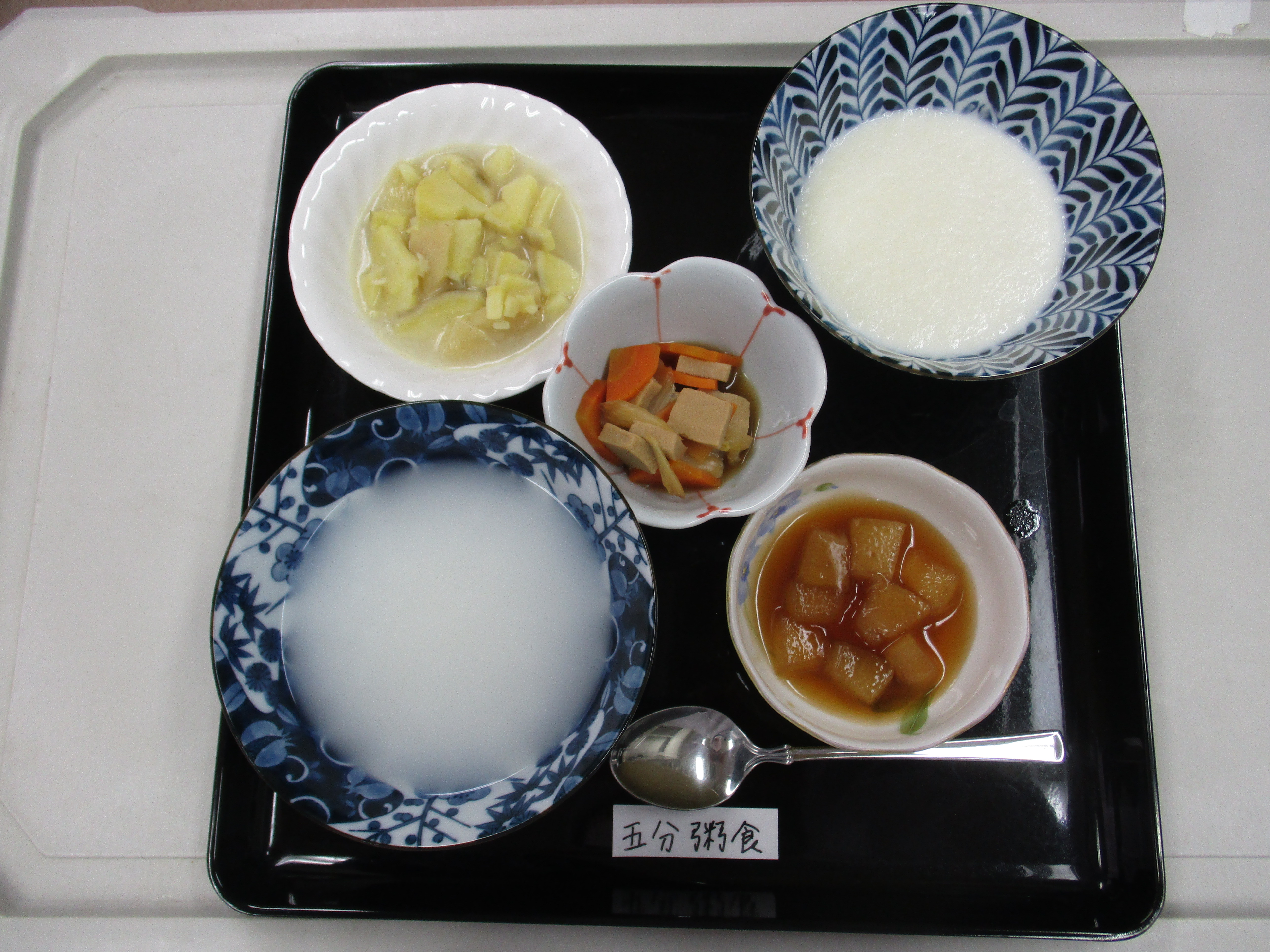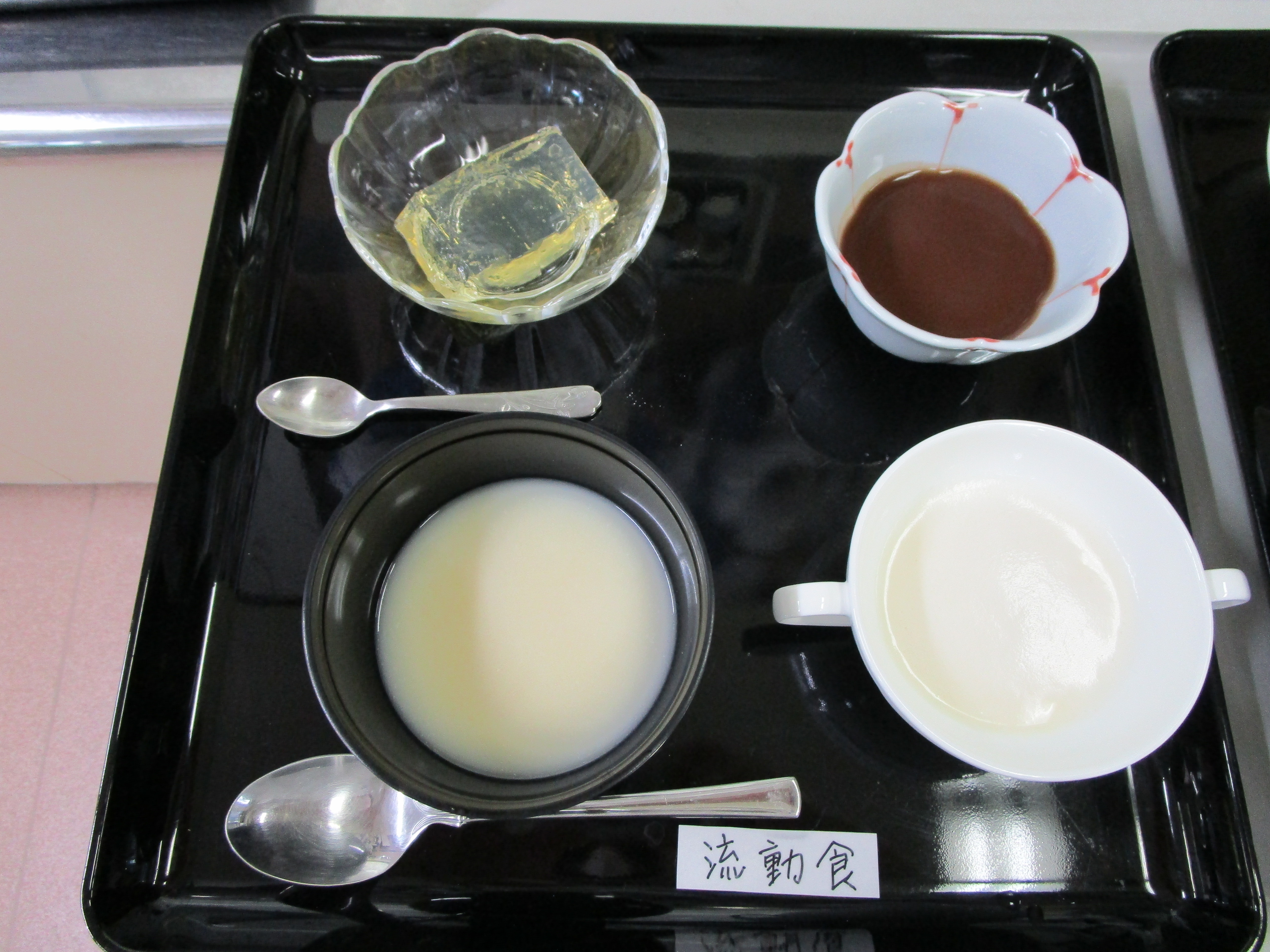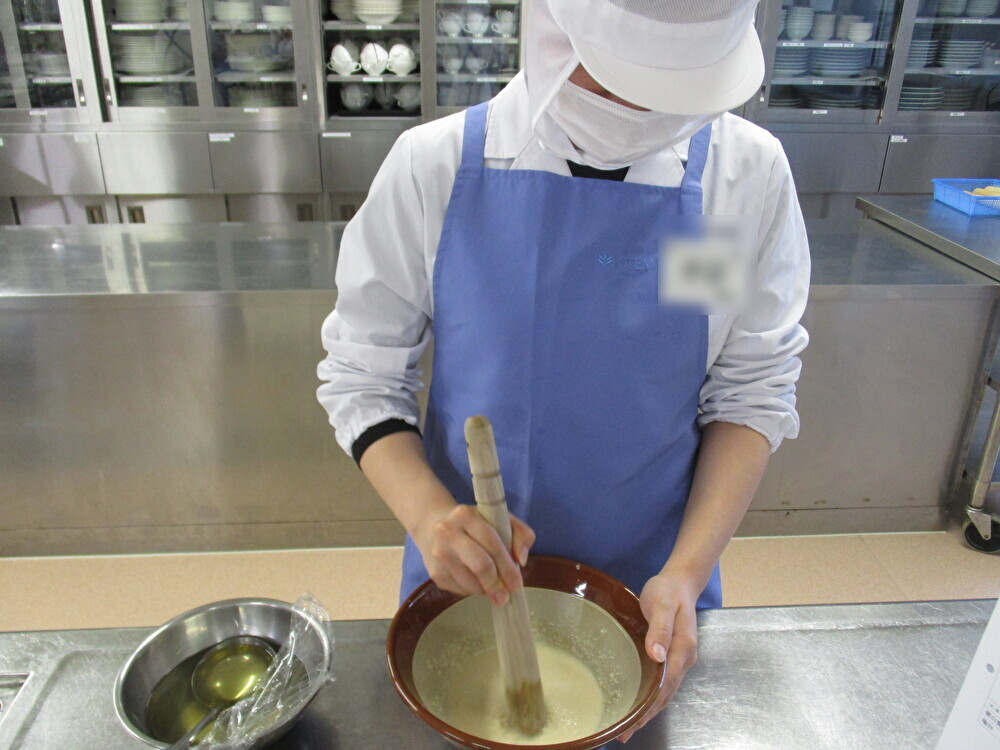
ニュース・プレスリリース
健康栄養学部3年生の臨床栄養学実習Ⅰについてご紹介します
2024.06.04
ニュース
- 健康栄養学部
- 在学生の方へ
臨床栄養学実習Ⅰの調理実習では、基本的に健康な人が普段食べているような食事(普通食)から
さまざまな疾患に合わせて食材や調理方法を変える特別治療食(特食)の献立を作成・調理して、
様々な食事の味や食感などを体験してもらいます。
今回の実習では、軟菜食という歯・胃・腸などの消化機能が低下した患者さんのための食事(流動食と5分粥食)
についての演習と調理実習を実施しました。
さらに、献立・調理が不要な市販の濃厚流動食についても試食しました。
1)流動食では、濃厚型流動食の「ココア葛湯」「豆腐のすり流し汁」「野菜ポタージュ」「りんごゼリー」という、
少量で高栄養量が摂取できる食事を目的に献立作成し、調理・試食しました。
2)5分粥食では、「5分粥」「パン粥」「冬瓜のくず煮」「凍り豆腐の含め煮」「さつま芋とりんごの重ね煮」という、
たんぱく質、脂質、糖質、ビタミンやミネラルと食物繊維を少量ずつですが充足でき、消化管には優しい食事を目的に
献立作成し、調理・試食しました。
3)市販の4種類の濃厚流動食(腎臓病用・糖尿病用・膵臓食用・一般食)について試食しました。
軟菜食は日頃の食事と比較して、噛み応えがないために満足感が得られにくい事や、
市販の濃厚流動食では、薬のような先入観での試食でしたが、思っていたより美味しいという声も聞こえていました。
実習を通して様々な病人用の飲み物や軟らかな消化の良い食事を味わうことは、
社会に出て管理栄養士として仕事に就いた時に役に立つのではないかと思います。
今後は嚥下障害食や脂質および糖質などのコントロール食の勉強もしていきます。
(配信元:調理研究室)





